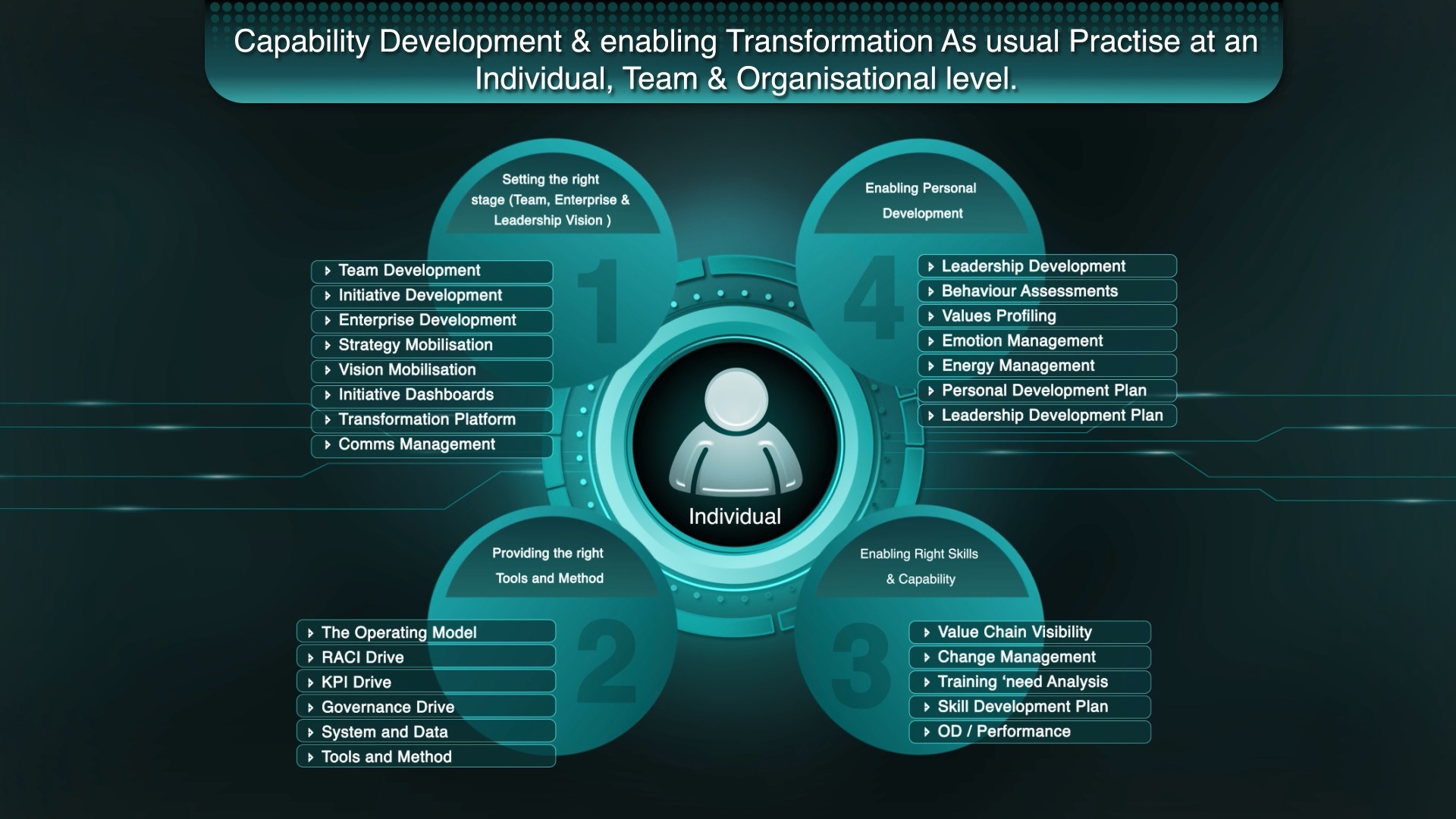Education Governance – Enterprise Business Transformation
An Introduction To Our Education Governance Platform
Modus Business Transformation Core Modules
Building, Driving and Sustaining your Business Transformation and embedding a 'Transformation As Usual' platform.
01 - Business Model Management - Manage and Adapt
Empower your educational institution with the Business Model Management Hub, and transform your vision into reality with Modus ETP.
Key Features:
• Customizable Business Model Canvas: Tailored to map key components of
education governance, such as funding models, policy frameworks,
academic programs, and stakeholder engagement.
• Value Chain Alignment: Connects educational policies, administrative
functions, and curriculum delivery to ensure alignment with overarching
governance goals and compliance standards.
• Scenario Planning and Policy Simulation: Enables simulation of different
policy changes or governance models, such as budget adjustments or
curriculum reforms, to assess potential impacts before implementation.
Importance:
• Strategic Alignment of Educational Objectives: Ensures that governance
models are aligned with institutional goals, national education policies, and
stakeholder needs, improving overall governance efficiency.
• Informed Decision-Making: Provides a data-driven approach to decision-
making, allowing education administrators to evaluate the effectiveness of
policies, resource allocation, and compliance with education standards.
• End-to-End Transparency: Enhances visibility across various educational
processes, from budgeting and funding to curriculum delivery and student
outcomes, ensuring alignment and accountability.
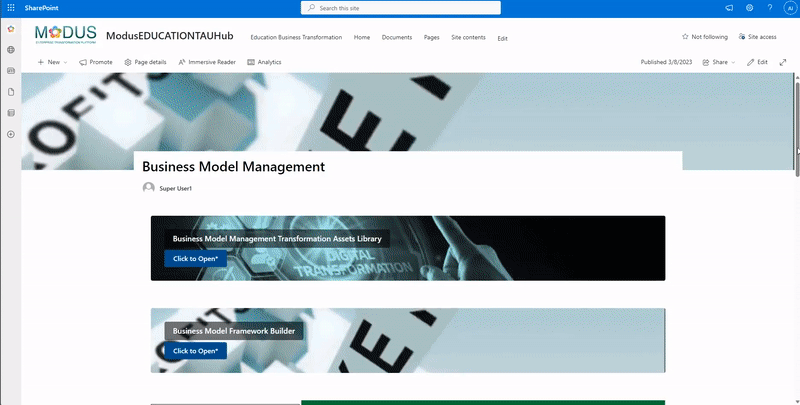
Benefits:
• Improved Governance Efficiency: Streamlines educational governance
processes by aligning operational and academic functions with overarching
policies, leading to more efficient use of resources.
• Enhanced Compliance and Accountability: Provides real-time tracking of key
metrics, helping education institutions stay compliant with legal and
regulatory requirements while enhancing accountability at all levels.
• Faster Policy Implementation: Facilitates quick adaptation and rollout of new
governance models or policies, ensuring institutions can respond rapidly to
changes in education standards or regulations.
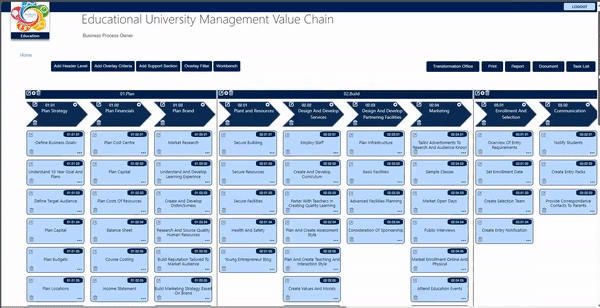
Benefits:
• Enhanced Governance Efficiency: Streamlines governance processes,
ensuring quicker decision-making and more efficient allocation of resources
across the education system.
• Improved Policy Impact: By simulating policy changes before
implementation, institutions can ensure that their impact is optimized for
better student outcomes and institutional performance.
• Risk Mitigation: Reduces the risks associated with policy changes by
enabling detailed scenario planning, allowing governance bodies to
anticipate challenges and address them proactively.
02 - The Value Chain Modeler - Manage and Adapt
Empower your educational institution with the Value Chain Modeler, and transform your strategic vision into actionable plans with Modus ETP.
Key Features:
• End-to-End Value Chain Mapping: Visualizes the entire educational
governance process, from policy formulation to implementation, covering
funding, curriculum management, and stakeholder engagement.
• Real-Time Process Tracking: Monitors governance activities in real-time,
such as budget allocations, academic program approvals, and compliance
with educational regulations.
• Scenario Analysis for Policy Changes: Simulates the impact of various policy
or governance changes (e.g., new curriculum standards, funding
adjustments) and assesses their effects on academic outcomes and
resource distribution.
Importance:
• Holistic View of Governance Processes: Provides a comprehensive view of
the entire governance value chain, helping institutions manage and optimize key activities like policy development, resource allocation, and academic
quality assurance.
• Proactive Policy Adaptation: Enables institutions to simulate and prepare for
potential changes in educational standards or funding, ensuring policies can
be adjusted with minimal disruption.
• Efficiency in Governance: Helps identify bottlenecks or inefficiencies in the
governance processes, driving more streamlined operations and reducing
delays in policy implementation.
03 - The Operating Model - Organize and Sustain
Empower your educational institution with the Modus ETP Operating Model, ensuring organized and sustainable operations for continuous success.
Key Features:
• Standardized Governance Framework: Provides a structured model to
organize and streamline governance processes, including policy
implementation, funding distribution, and curriculum management.
• Real-Time Operating Model: Tracks ongoing governance activities, offering
visibility into live operations such as compliance checks, resource allocation,
and stakeholder engagement.
• Performance Metrics Monitoring: Integrates KPIs for assessing governance
effectiveness, tracking key indicators like budget efficiency, policy
compliance, and academic outcomes.
• Continuous Improvement Tools: Supports the ongoing evaluation and
refinement of governance practices, ensuring that policies and operations
evolve to meet changing educational standards and needs.
Importance:
• Operational Consistency: Ensures that governance bodies follow
standardized procedures, leading to consistent implementation of policies
and regulations across educational institutions.
• Sustainability in Governance: Embeds long-term practices into the
governance framework, ensuring that operations are not only efficient but
also adaptable to future changes and challenges.
• Alignment with Educational Goals: Keeps day-to-day governance activities
aligned with the overarching strategic goals of the education system, such
as improving access, quality, and equity.
• Real-Time Visibility: Offers continuous insight into governance operations,
enabling institutions to monitor performance, address issues, and make
data-driven decisions in real time.

Benefits:
• Improved Efficiency: Streamlines governance operations, reducing delays in
policy implementation and ensuring that resources, such as funding and
staffing, are distributed effectively.
• Sustained Policy Compliance: Ensures consistent adherence to policies and
regulations across institutions, reducing risks of non-compliance and
promoting high governance standards.
• Agility and Adaptation: Enables education governance bodies to quickly
adjust their operations in response to new regulations, emerging trends, or
external challenges, ensuring continued effectiveness.
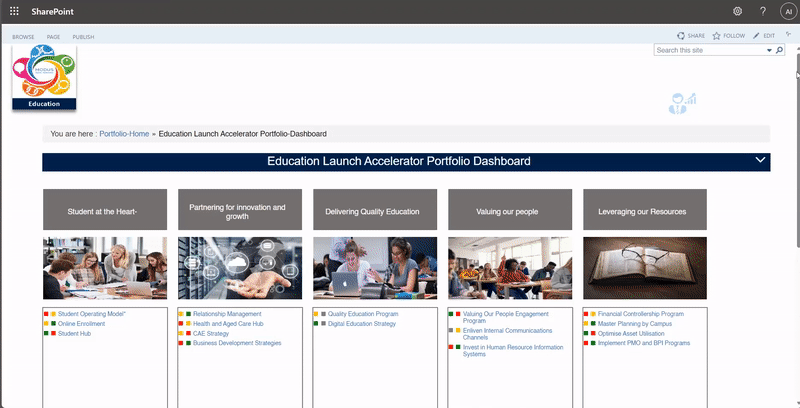
Benefits:
• Accelerated Transformation: Speeds up governance reforms and policy
implementation by providing pre-configured tools and templates, enabling
education systems to deploy changes quickly and effectively.
• Optimized Resource Management: Ensures that resources such as funding,
personnel, and technology are allocated efficiently across transformation
projects, avoiding duplication and delays.
• Risk Mitigation: Reduces the risks associated with large-scale governance
reforms by providing scenario planning and real-time insights, helping to
anticipate challenges and address them proactively.
04 - The Transformation Assets and Portfolio Module - Discover and Transform
Empower your educational institution with the Modus ETP Transformation Assets and Portfolio Module, ensuring successful and sustainable transformation.
Key Features:
• Centralized Asset Repository: Stores all transformation resources, including
tools, templates, methodologies, and governance frameworks, allowing easy
access for policy development and implementation.
• Portfolio Management Dashboard: Provides real-time visibility into all
governance transformation initiatives, such as policy reforms, funding
allocation projects, and digital education transitions.
• Scenario Planning and Risk Analysis: Facilitates the modeling of different
governance scenarios, such as changes in educational policy or resour
Importance:
• Comprehensive Governance Oversight: Provides a holistic view of ongoing
governance transformation initiatives, allowing for better coordination,
prioritization, and resource allocation across various educational projects.
• Standardization and Consistency: Ensures that all governance reforms and
transformation initiatives follow standardized processes, improving the
quality and consistency of policy implementation across institutions.
• Informed Decision-Making: Allows education governance bodies to evaluate
the success of ongoing projects and adjust strategies based on real-time
data and scenario modeling.
• Value Chain Analysis
• Business Model Analysis
• Transformation Strategy
• Transformation Mobilization
• Planning Management
• Transformation Log Management
• Financial Management
• Communication Management
• Operating Model Management
• Process Design Management
• IT Design Management
• Build and Test Management
• Implementation Management
• Change Management
• Personal Development Assessments
• Training Management
• Organizational Design Management
• Transformation Review
• Optimization and Governance
05 - Organizational Change Management - Unite and Thrive
Empower your educational institution with the Modus ETP Organizational Change Management module, ensuring united and thriving operations.
Key Features:
• Structured Change Framework: Provides a clear methodology for managing
changes in governance, such as policy reforms, administrative adjustments,
or technological upgrades, ensuring consistency across institutions.
• Impact Assessment Tools: Analyzes the effects of proposed changes on
various governance areas, including policy compliance, resource allocation,
and educational outcomes, helping leaders make informed decisions.
• Role-Based Change Implementation: Aligns change initiatives with specific
roles and responsibilities across departments, ensuring that staff at every
level are prepared for and engaged in the change process.
• Integrated Communication and Collaboration Tools: Facilitates transparent
communication across governance bodies, educational institutions, and
stakeholders to ensure everyone is informed and aligned during the
transformation.
Importance:
• Minimizing Disruption: Ensures that significant governance changes, such
as policy updates or structural adjustments, are implemented smoothly,
minimizing disruption to daily operations and educational activities.
• Employee Engagement and Buy-In: Encourages involvement and
engagement by offering clear communication and support, reducing
resistance to change and promoting a culture of continuous improvement.
• Consistent Policy Adoption: Ensures that governance reforms are uniformly
adopted across institutions, leading to consistent implementation of new
policies, regulations, or standards.
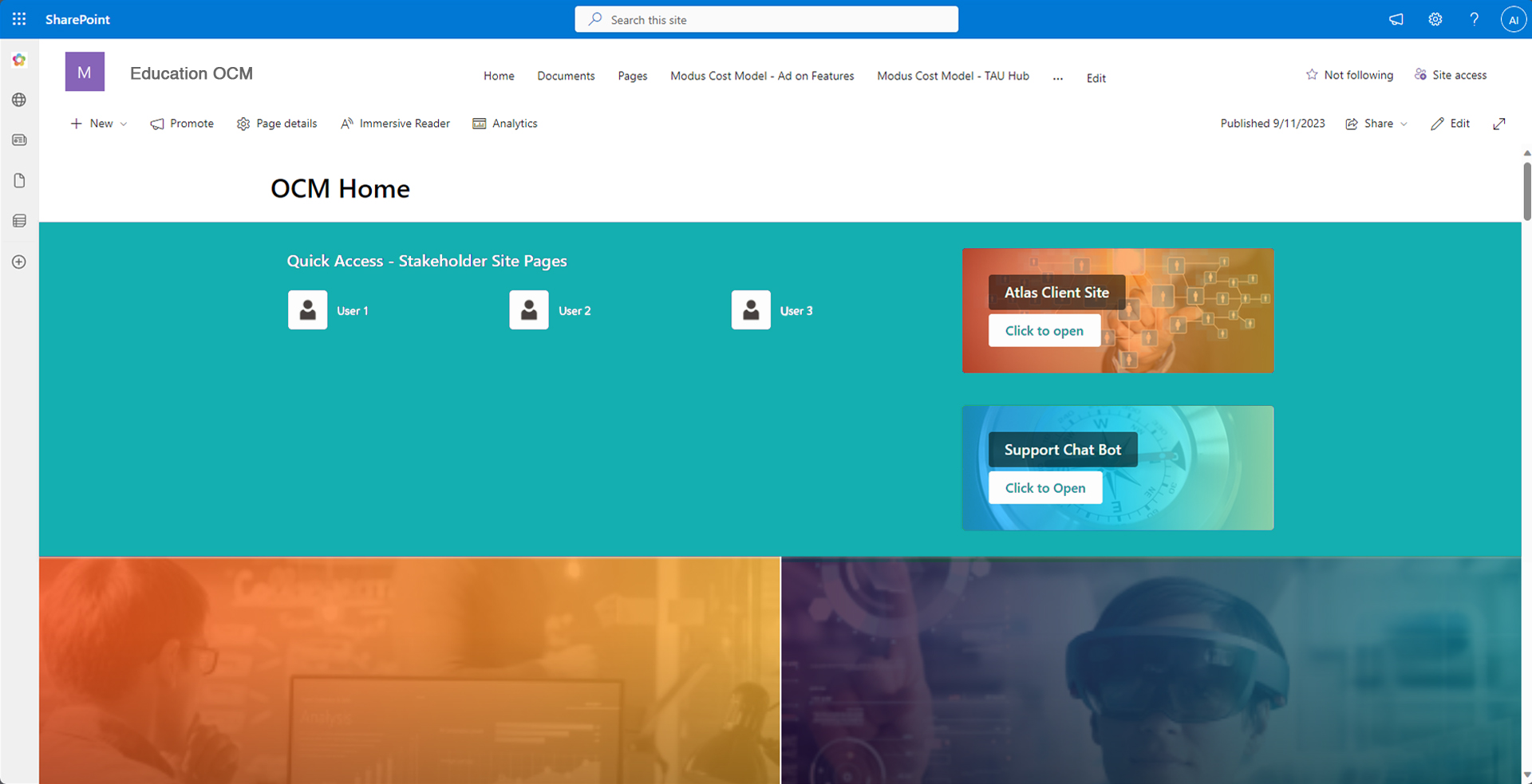
Benefits:
• Seamless Transitions: Facilitates the smooth implementation of governance
reforms, such as new policies or digital tools, ensuring minimal operational
disruption and quick adaptation.
• Increased Stakeholder Alignment: Promotes greater collaboration and
alignment among governance bodies, educational institutions, and
stakeholders, resulting in more cohesive and effective governance.
• Improved Compliance and Accountability: Ensures that all stakeholders are
informed and aligned with new policies or regulations, improving compliance
and enhancing accountability across the education system.
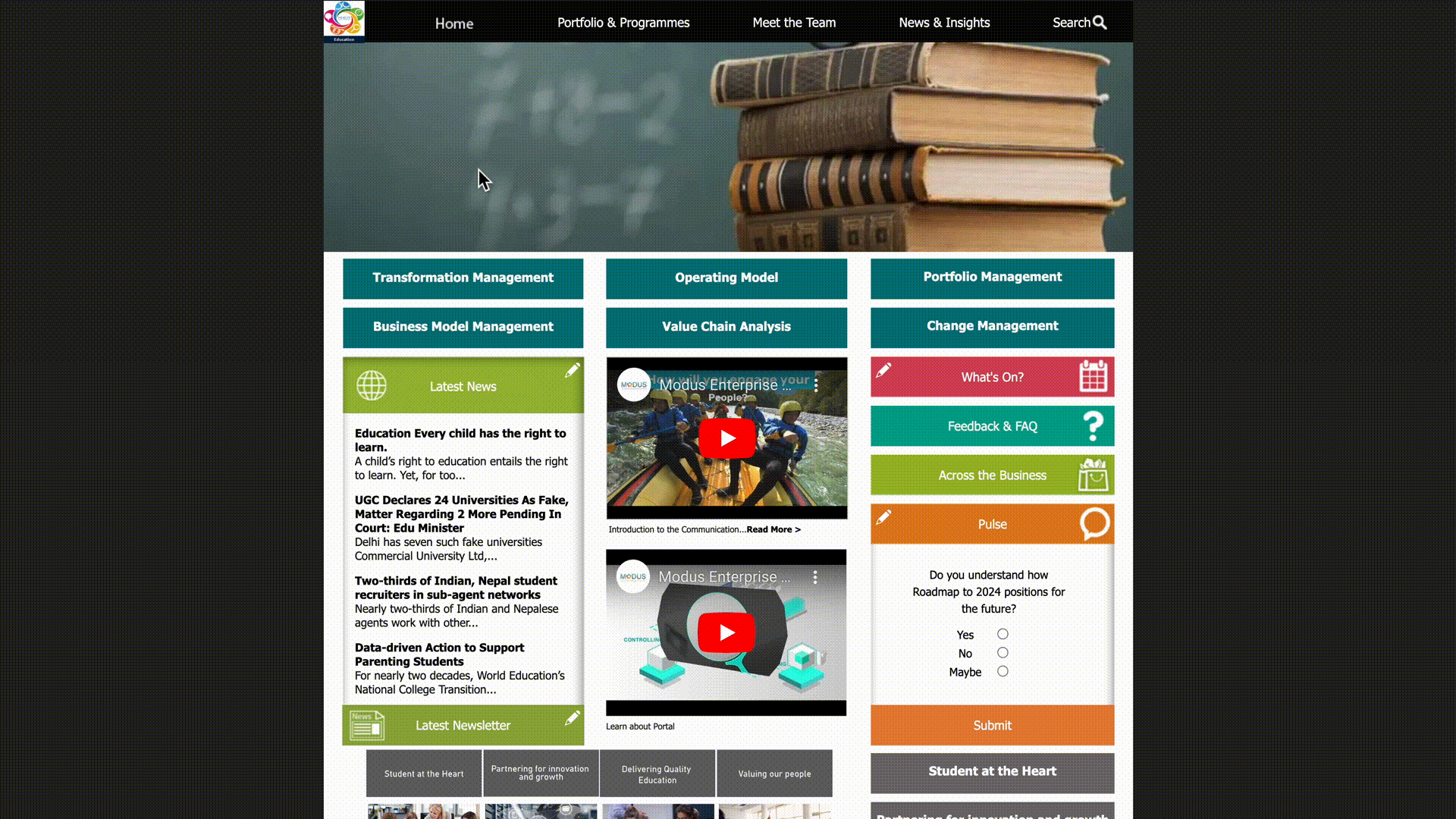
Benefits:
• Improved Collaboration: Strengthens cooperation between governance
bodies, schools, and policymakers, leading to more efficient decision-making
and policy execution.
• Faster Response Times: Real-time notifications and updates allow
governance bodies and institutions to respond quickly to changes in policy or
emerging issues, minimizing delays.
• Increased Stakeholder Alignment: Ensures that all stakeholders are aligned
with governance goals and strategies, leading to more cohesive and
effective governance across the education system.
06 - Engagement Hub - Share and Guide
Empower your educational institution with the Modus ETP Engagement Hub, ensuring a connected and informed transformation journey.
Key Features:
• Centralized Communication Platform: Provides a unified portal for sharing
updates, guidelines, and educational policies with all stakeholders, including
government bodies, schools, and regulatory authorities.
• Collaborative Tools: Facilitates cross-functional collaboration between
governance bodies, educators, and policymakers, allowing for the sharing of
documents, insights, and resources.
• Real-Time Notifications and Alerts: Sends real-time updates on critical
governance matters such as policy changes, compliance deadlines, and
budget allocations, ensuring everyone is informed and up-to-date.
• Role-Based Access: Tailors information and resources based on user roles,
ensuring that policymakers, administrators, and educators receive relevant,
task-specific guidance and updates.
Importance:
• Enhanced Communication Flow: Ensures clear and consistent
communication across all levels of education governance, reducing
confusion and ensuring that policies and updates are disseminated
efficiently.
• Stakeholder Engagement: Promotes collaboration and engagement between
governance bodies and educational institutions, fostering better alignment
on goals and policies.
• Transparency and Accountability: Provides real-time access to policy
updates and governance decisions, ensuring that all stakeholders have
visibility into the governance process and its outcomes.
Transformation As Usual Capability Model
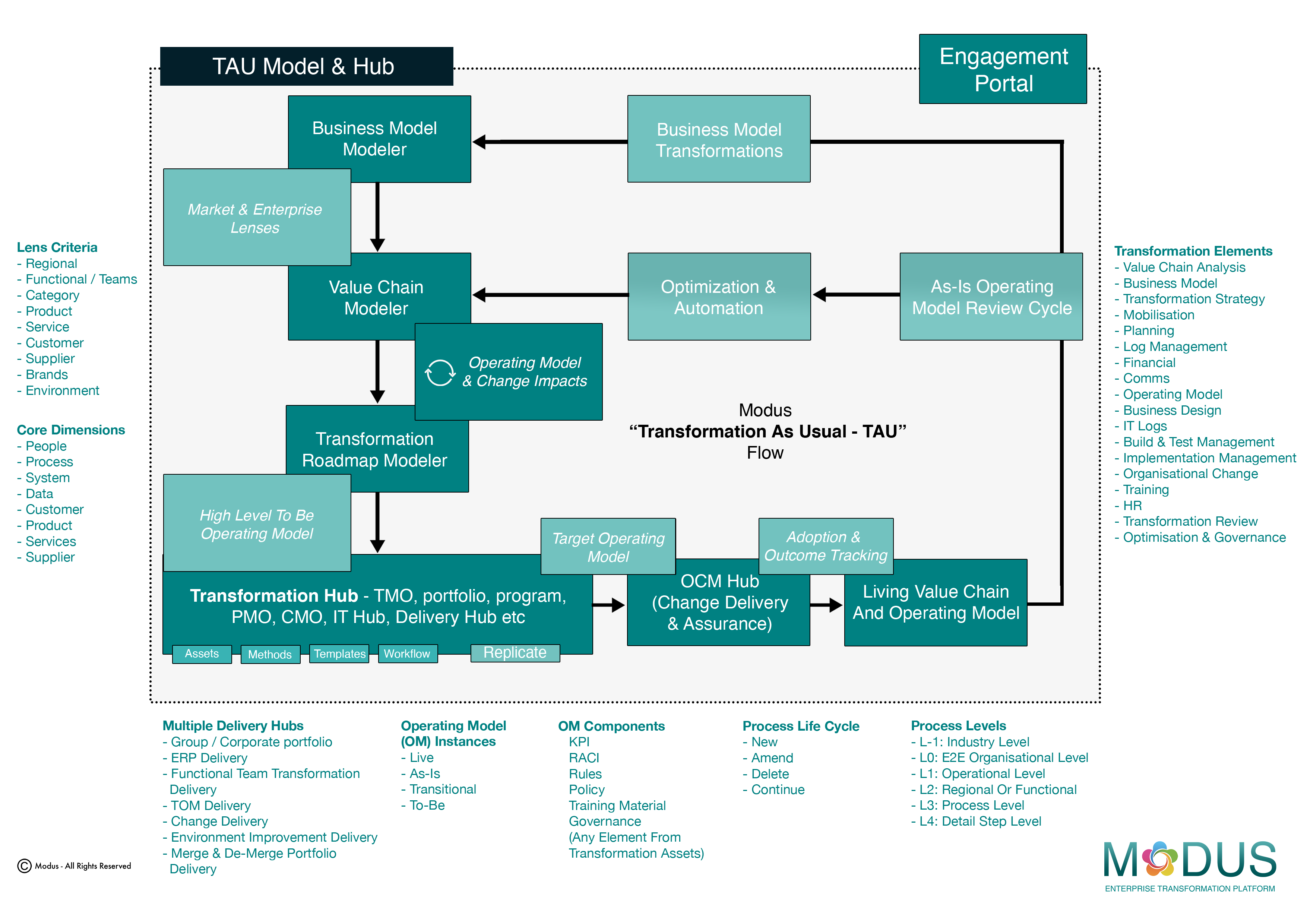
Individual and Team Capability Development
